|
|

|
 Keynotes for the Main Track Keynotes for the Main Track
October 12, 2009, 9:30 - 10:15
Dr. Valtteri Niemi, Nokia Research Center, Lausanne, Switzerland
October 12, 2009, 13:30 - 14:30
Dr. Alexander Sayenko, Nokia Siemens Networks, Espoo, Finland
October 13, 2009, 9:00 - 9:45
Prof. Silvia Giordano, University of Applied Sciences, Switzerland
October 13, 2009, 13:20 - 13:35
Prof. Yuri Ryzhikov, Institute of Computer Science and Automation of the Russian Academy of Sciences Saint-Petersburg, Russia
October 13, 2009, 13:35 - 14:15
Dr. Leonid Perlovsky, Harvard University, USA
October 14, 2009, 9:00 - 9:45
Prof. James P.G. Sterbenz, The University of Kansas, USA and Lancaster University, UK
 Keynotes for associated workshops Keynotes for associated workshops
Nets4Cars
Dr. Tsutomu Tsuboi, Automotive Semiconductor Business Unit, Renesas Technology Corporation, Tokyo, Japan: In-Vehicle Wireless Communication System and Next Generation ITS Application
Oleg Gusikhin, Ford Manufacturing, Vehicle Design and Safety Research Laboratory, USA: Embracing Cloud-Based Infotainment
RNDM
Prof. Wayne Grover, IEEE Fellow, University of Alberta, Canada: p-Cycles: A Review of Basics and Current State-of-the-art
 Abstracts and bios Abstracts and bios
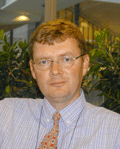 |
Dr. Valtteri Niemi
Fellow of Nokia Research Center
Lausanne, Switzerland |
LTE Security
Abstract
LTE is a new radio technology that could be seen as the next generation after GSM and WCDMA. 3GPP has finalized specification work for the first release of LTE in end of 2008 and first products are also expected fairly soon. LTE is accompanied by a new network architecture, called SAE in 3GPP, which allows also other radio technologies (including technologies not specified by 3GPP) to be connected to the one and same core network.
This new setting requires many enhancements to 3G security features, and completely novel security techniques are also introduced with LTE. More specifically, the new architecture is flat (compared to GSM or 3G network architectures) which restricts the possibilities of placing security functions on the network side. As a consequence, some important security functions, e.g. encryption of user data, are terminated in the LTE base station site. This kind of very distributed approach to security requires many enhancements to the 3G security model.
The new security features would be covered in the talk, with explanations of the background and the reasoning behind the design decisions. Also, comparison to GSM and 3G security architectures is given, and altogether, light is shed on the evolution of security that has happened together with the evolution of the radio and network technologies.
Bio
Valtteri Niemi received a PhD degree from the University of Turku, Finland,
Mathematics Department, in 1989. After serving in various positions in Univ of Turku, he was an Associate Professor in the Mathematics and Statistics Department of the University of Vaasa, Finland, during 1993-97. He joined Nokia Research Center (NRC), Helsinki in 1997 and in 1999 he was nominated as a Research Fellow. During 2004-2006, he was responsible for Nokia research in wireless security area as a Senior Research Manager. During 2007-2008, Dr. Niemi lead the Trustworthy Communications and Identities team in the Internet laboratory of NRC, Helsinki. He recently moved to the new NRC laboratory in Lausanne, Switzerland, where his main focus is on privacy-enhancing technologies. He was also nominated as a Nokia Fellow in 2009.
Dr. Niemi's work has been on security issues of future mobile networks and terminals,
the main emphasis being on cryptological aspects. He has participated 3GPP SA3 (security) standardization group from the beginning. Starting from 2003, he has been the chairman of the group.
Before 3GPP, Niemi took part in ETSI SMG 10 for GSM security work.
In addition to cryptology and security, Dr. Niemi has done research on the area of
formal languages. He has published more than 40 scientific articles and he is a co-author of three books.
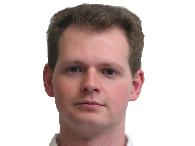 |
Dr. Alexander Sayenko
Senior Specialist
Radio Systems
Research, Technology & Platforms
Nokia Siemens Networks
Espoo, Finland
|
State of the Art of Relaying Technologies in Modern Wireless Communication Systems
Abstract
The very high data rate demands for the wireless communication systems create a need for more fundamental enhancements, other than just increasing the transmission bandwidth or introducing higher order modulation and the coding schemes. Along with technologies, such as MIMO and cooperative multi-point transmission, relaying is foreseen as a quite promising solution. At the moment, there are two major wireless technologies where multi-hop relays gained a significant interest from vendors and operators: 3GPP LTE-A and the IEEE 802.16j extensions of the baseline IEEE 802.16 system. In this talk an overview of the relaying standardization activities is given with functional features taken by the industry. Along with the standardization landscape, we will highlight related base station and relay station design and deployment issues that create a strong motivation for the relay deployment. In addition, we will present an overview of competing solutions for the in-door coverage, such as femto cells.
Bio
Alexander Sayenko obtained the BSc degree from the Kharkov State University of RadioElectronics (Ukraine) in 2001. In 2002, he received the MSc degree from the University of Jyväskylä (Finland). After enrolling to the PhD program, he focused on scheduling, the QoS, network management and signaling mechanisms for the core wired networks. While working on the signaling solutions, he took part in the IETF NSIS and TS WGs. Starting from 2007, he worked for Nokia Research Center as a senior research engineer. His responsibility was terminal architectures and the resource and power management solutions for mobile terminals. In 2008, he joined Nokia Siemens Networks as a senior specialist where his research responsibilities are simulation and performance analysis of wireless systems, such as IEEE 802.16 WiMAX and 3GPP HSPA+. Starting from 2007, he has been taking part in the WiMAX Forum in AWG and TWG working groups. His research interest include simulations, performance analysis and resource management in wireless and wired networks.
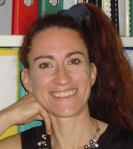 |
Prof. Silvia Giordano
Professor
University of Applied Science (SUPSI)
Ticino, Switzerland |
The future is mobile (ad hoc) networking?
Abstract [the talk is organized and sponsored by the SASN workshop]
In the last decade, mobile ad hoc networking has been suggested as a technology for realizing the ubiquitous computing vision. However, after more than ten years of research in this field, this promising technology has not yet entered the mass market. One of the main reasons for this is the lack of a pragmatic approach to the design of infrastructure-less multi-hop ad hoc networks.
However, this paradigm was successfully applied in several classes of networks that are penetrating the mass market. In this tutorial, we discuss as examples mesh, opportunistic, vehicular, and sensor networks, where the multi-hop ad hoc paradigm is applied in a pragmatic way to extend the Internet and/or to support well-defined application requirements.
In particular, we highlight how the proliferation of mobile devices is driving our reality toward a pervasive world, where all these classes of networks have concrete and effective use, as for example: location-based or social-based applications. We describe some examples of current and future application that can be realized only thanks to those classes of networks that exploit the mobile ad hoc networking paradigm.
Bio
Silvia Giordano is Professor at the University of Applied Science - SUPSI in
Ticino, Switzerland. She is in the directorate of the Institute of Systems for Informatics and Networking
(ISIN) at SUPSI, and head of the Networking Lab. She is teaching several courses in the
area of: Wireless and Mobile Networking, Quality of Services and Networks Applications.
Previously, she was on the faculty of the EPFL and of the University of Pisa. Since October 2001,
she is also an associate researcher at CNR, Pisa. She is co-editor of the book "Mobile Ad Hoc
Networking" (IEEE-Wiley 2004). She has published extensively on journals, magazines and
conferences in the areas of quality of services, traffic control, wireless and mobile ad hoc networks.
She has participated in several European ACTS/IST projects and European Science Foundation
(ESF) activities. Since 1999 she serves as Technical Editor of IEEE Communications Magazine,
and is currently the series co-editor of the new series on adhoc and sensor networks of the IEEE
Communication Magazine. She is an area editor of the Elsevier journal Computer Communications (ComCom).
She is also Editor of Ad hoc networks journal of Elsevier and Ad Hoc &
Sensor Wireless Networks journal, Ocpscience. She was already co-editor of several special issues
of JSAC, IEEE Communications Magazine and Baltzer MONET and Cluster Computing on mobile ad hoc
networking and QoS networking. She is co-founder of the International Workshop on Sensor
Networks and Systems for Pervasive Computing (PerSeNS), General chair of WoWMoM 2009, program vice-chair of PerCom 2009, program chair of MASS 2007, workshop chair of WoWMoM 2007, tutorial chair of MobiHoc 2006, general chair of the
2005 edition of IFIP conference WONS (Wireless On-demand Network Systems), co-founder of the
International Workshop on Autonomic and Opportunistic Communication (AOC) and
is/was on the executive committee and TPC of several international conferences, and serves as
reviewer on transactions and journals, as well as for several important conferences. She is a member
of IEEE Computer Society and IFIP WG 6.8. Her current research interests include opportunistic networking, wireless, mobile ad hoc and sensor networks and QoS and traffic
control.
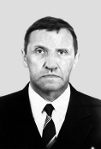 |
Prof. Yuri Ryzhikov
Professor
Institute of Computer Science and Automation of the Russian Academy of Sciences
Saint-Petersburg,
Russia |
Numerical Methods of the Queuing Theory and Theirs Program Realization
Abstract
Theoretical bases are considered and the structure of the software package
for calculation of queuing systems with the substantial role of the factor
of time is grounded. Versions of a package are described.
Bio
Yu. I. Ryzhikov was born on October, 10, 1933. Has survived
through the blockade of Leningrad. In 1958 has finished
engineering faculty of the Black Sea Supreme Naval School. Since
1962 works in Leningrad Military Air Academy
named after A. F. Mozhajsky. He has defended the PhD thesis in 1965,
doctor's of technical sciences in 1969 (both in the area of inventory control theory). Now he
is the professor of faculty of a computer software, the Honorable
professor of the Academy, the Honored worker of a science of the
Russian Federation.
Since 2008 additionally he is the leading scientist of the
St.-Petersburg Institute of Computer Science of the Russian
Academy of Sciences.
He is expert on computing methods, applied programming, numerical
methods of the queuing theory, inventory control and "science on
science", he has authored over 230 scientific contributions.
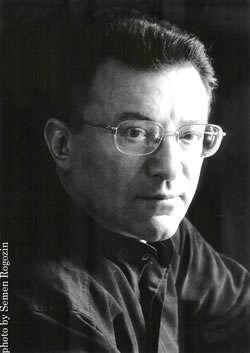 |
Dr. Leonid Perlovsky
Harvard University
USA
|
Communicating with Understanding. Cognition, Language, and Emotions
Abstract
Today communications are intended for human understanding. Computers transfer contents of images, texts, and speech into communicable codes, but do not understand these contents. Future communication systems will understand the meanings of what is communicated, will understand user needs, and will be a part of integrated human-computer systems, in which computers and human users will learn from each other. Cognitive research indicates that emotional mechanisms are fundamental to cognition and to interaction between cognition and language.
Creating cognitive algorithms for understanding text, language, and surrounding world has met difficulties since the 1950s. The talk briefly reviews past mathematical difficulties of artificial intelligence and new mathematical techniques of dynamic logic (DL), which overcome these difficulties. DL evolve fuzzy concepts and contents into crisp ones. Computational and neural mechanisms of concepts, emotions, instincts are described; they are inseparable from perception and cognition. Engineering applications illustrate orders of magnitude improvement in recognition, data mining, fusion, financial predictions. DL is extended to language, to mechanisms of joint operations of language and cognition, and to understanding complex situations. The brain imaging experiments have confirmed mechanisms of DL and language-cognition interactions in the human brain.
Development of algorithms involving emotional, conceptual, and language mechanisms is still at an incipient stage. The talk discusses the current state of art and future research directions. These include developing future adaptive self-improving web tools capable of learning and understanding contents, web search engines with human level understanding, relating engineering algorithms and human instinctual mechanisms, emotional intelligence and emotional contents of languages, understanding differences among languages and cultures in their emotional contents, and developing approaches to improve inter-cultural communication.
Bio
Dr. Leonid Perlovsky is Visiting Scholar at Harvard University, Technical Advisor and Principal Research Physicist at the Air Force Research Laboratory. His research interests include computational intelligence and neural networks; mathematical modeling of the mind and brain including higher cognitive functions, consciousness, emotions; abilities for beautiful, sublime, music; evolution of languages, cognition and cultures. He serves as Program Manager for DOD Semantic Web program and for several research projects. From 1985 to 1999 Chief Scientist at Nichols Research, a $0.5 B high-tech organization, leading the corporate research in intelligent systems, neural networks, sensor fusion, and data mining; previously, Professor at Novosibirsk University and New York University. He participated as a principal in commercial startups developing tools for natural language text understanding, biotechnology, and financial predictions. His financial company predicted the market crash following 9/11 a week before the event, apparently detecting illegal Al Qaeda trades, and later helped SEC tracking the perpetrators. Dr. Perlovsky delivered invited keynote and plenary talks, tutorial lectures at conferences and Universities worldwide; published about 60 papers in refereed scientific journals, 250 papers in conferences, authored 10 book chapters and three books, "Neural Networks and Intellect," Oxford University Press 2001 (currently in the 3rd printing); "Neurodynamics of Higher-Level Cognition and Consciousness" (co-author R. Kozma), Springer 2007' "Sapient Systems" (co-author R. Mayorga), Springer 2007. He leads an IEEE NNTC Task Force on The Mind and Brain; serves as a Member of the Board of Governors, International Neural Networks Society; Chair IEEE Boston Computational Intelligence Chapter, on several IEEE Committees, Organizing Committees for WCCI'06, IJCNN'07, Program Co-Chair for IJCNN'09, Program and General Chair for several IEEE conferences, Assistant Editor for "Transactions on Neural Networks," Editor-at-large for "Natural Computations," Editor-in-Chief for "Physics of Life Reviews." He is interviewed on Radio and TV about workings of the human mind. Dr. Perlovsky received prestigious National and International awards, including several Best Paper awards, IEEE Distinguished Member Award, Boston Section 2005; Dr. Charles E. Ryan Memorial Award for outstanding in-house scientific efforts and achievement 2007, Air Force Research Laboratory; International Neural Network Society Gabor Award, 2007; McLucas Award 2007 (the top scientific US Air Force award).
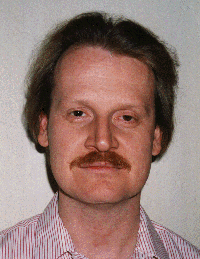 |
Prof. James P.G. Sterbenz,
Professor
The University of Kansas, USA and Lancaster University, UK
|
Resilience, Survivability, and Heterogeneity in the Postmodern Internet
Abstract
Society increasingly relies on computer networks in general, and the
Internet in particular. Consumers rely on networks for access to
information and services, personal finance, and for communication with
others. The Internet has become indispensable to the routine operation
of businesses and to the global economy. The military depends on
network centric operations and warfare. Governments depend on networks
for their daily operation, service delivery, and response to natural
disaster and terrorist attacks. Furthermore, the Internet is being
used in ways not anticipated by its designers and evolution of the
protocols, in particular: TCP, IP, BGP, DNS, and HTTP. Emerging
application paradigms and mashups coupled with usage scenarios that
are increasingly disconnected and mobile challenge the current
architecture. This has been recognised by research and development
initiatives including NSF FIND (Future Internet Design), GENI (Global
Environments for Network Innovation), and EU FIRE (Future Internet
Research and Experimentation). This presentation will focus on two
key aspects of the future Internet: resilience and heterogeneity.
Resilience: The consequences to disruption of the Internet are
increasingly severe, and threaten the lives of individuals, the
financial health of business, and the economic stability and security
of nations and the world. With the increasing importance of the
Internet, so follows it's attractiveness as a target from bad guys:
recreational and professional crackers, terrorists, and from
information warfare. The EU FIRE ResumeNet project is exploring
resilience and survivability as critical properties of the future
Internet architecture.
Heterogeneity: New applications and usage scenarios stress the
Internet architecture that has evolved assuming a stable wired
infrastructure. While the current hourglass waist provided by
IP, DNS, and BGP has served the Internet well, the demand for
heterogeneity stresses the least-common-denominator of the waist.
The NSF FIND Postmodern Internet project (PoMo) is exploring heterogeneity
as a first-class citizen in the Postmodern Internet, in which
a new internetworking protocol serves as the glue for heterogeneous
realms with explicit support for trust and policy boundaries.
The Great Plains Environment for Network Innovation (GpENI) is
constructing part of the GENI infrastructure, which will in part be
used as a platform to test and evaluate ResumeNet and PoMo
architecture. Additionally, research in two domain-specific realms
will be described.
Highly Dynamic Airborne Networking
Highly dynamic mobile wireless networks present unique challenges to
end-to-end communication, particularly caused by the time varying
connectivity of high-velocity nodes combined with the unreliability of
the wireless communication channel. Addressing these challenges
requires the design of new protocols and mechanisms specific to this
environment. Our research explores the tradeoffs in the location of
functionality such as error control and location management for
high-velocity multihop airborne-sensor networks and presents
cross-layer optimizations between the MAC, link, network, and
transport layers to enable a domain specific network architecture,
which provides high reliability for telemetry applications. We have
designed new transport, network, and routing protocols for this
environment: TCP-friendly AeroTP, IP-compatible AeroNP, and AeroRP,
which show significant performance improvement over the traditional
TCP/IP/MANET protocol stack.
Weather Disruption-Tolerant Millimeter-Wave Mesh Networking
Millimeter-wave networks have the potential to supplement fiber in
providing high-speed Internet access, as well as backhaul for emerging
mobile 3G and 4G services. However, due to the high frequency of
operation (70-90 GHz), such networks are highly susceptible to
attenuation from rain. A resilient mesh topology with cross-layering
between the physical and network layer has the potential to
self-optimise under the presence of unstable links. Our research
investigates mechanisms to overcome the disruptive effects of rain
storms on network connectivity and service reliability. We propose
two novel domain-specific predictive routing algorithms: P-WARP that
uses real-time radar data to dynamically reroute traffic in advance of
link failures, as well as a modified link-state algorithm XL-OSPF that
uses cross-layering to instantaneously react to link failures.
Simulations evaluate the effectiveness of the proposed algorithms
based on data from real storms in the Midwest US.
Bio
Dr. James P.G. Sterbenz is Associate Professor of Electrical
Engineering & Computer Science and on staff at the Information &
Telecommunication Technology Center at the University of Kansas, and
is a Visiting Professor of Computing in InfoLab 21 at Lancaster
University in the UK. He has previously held senior staff and
research management positions at BBN Technologies, GTE Laboratories,
and IBM Research. His research interests include resilient,
survivable, and disruption tolerant networking, future Internet
architectures, active and programmable networks, and high-speed
networking and components. He is currently in the NSF-funded FIND and
GENI programs, and the EU-funded FIRE ResumeNet project. He received
a doctorate in computer science from Washington University in 1991.
He has been program chair for IEEE GBN and HotI, IFIP IWSOS, PfHSN,
and IWAN, and is on the editorial board of IEEE Network. He is
principal author of the book High-Speed Networking: A Systematic
Approach to High-Bandwidth Low-Latency Communication.
| |
|
